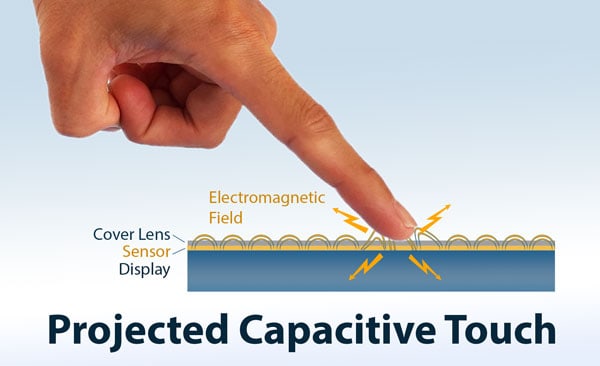
- English
- Español
- Português
- русский
- Français
- 日本語
- Deutsch
- tiếng Việt
- Italiano
- Nederlands
- ภาษาไทย
- Polski
- 한국어
- Svenska
- magyar
- Malay
- বাংলা ভাষার
- Dansk
- Suomi
- हिन्दी
- Pilipino
- Türkçe
- Gaeilge
- العربية
- Indonesia
- Norsk
- تمل
- český
- ελληνικά
- український
- Javanese
- فارسی
- தமிழ்
- తెలుగు
- नेपाली
- Burmese
- български
- ລາວ
- Latine
- Қазақша
- Euskal
- Azərbaycan
- Slovenský jazyk
- Македонски
- Lietuvos
- Eesti Keel
- Română
- Slovenski
- मराठी
- Srpski језик
静電容量のタッチスクリーンと抵抗タッチスクリーンについてどれだけ知っていますか?そして、どのように選択しますか?
2025-04-17
Capacitive Touch Screen & Resistive Touch Screen:
In today’s highly digital world, touch screens are everywhere. From smartphones and tablets to industrial and medical devices, touch screens have become an essential part of our daily lives. Capacitive touch screens and resistive touch screens are most popular types in the market.
Today, let’s take an in-depth look at them and find out the pros and cons of each.
Capacitive Touch Screen:
Capacitive touch screens are the most common type of touch screens used in life nowadays.
It is made up of layers of glass, coated with a conductive material such as indium tin oxide (ITO).
When a finger or other conductive object touches the screen, changes in electrostatic field can be detected. Capacitive touch screens are highly responsive to touch and can recognize even the slightest touch or gesture.
One of the main advantages of capacitive touch screens is their high level of sensitivity. This means that users can interact with their devices easily and quickly, without having to apply a lot of pressure. Capacitive screens also offer excellent color reproduction and clarity, making them ideal for gaming, streaming video, and browsing the web.
Resistive Touch Screen:
Resistive touch screens are an older technology, it is made up of multiple layers of thin films, with one layer coated with a resistive material such as indium oxide.
When pressure is applied to the screen, the top layer squeezes down and makes contact with the bottom layer, completing an electrical circuit. This circuit is then interpreted by the touch screen’s controller. Resistive touch screens are less responsive and accurate than capacitive touch screens, it is a disadvantage but also an advantage, because in some circumstances, users will not need touch screen too responsive to prevent the false operation of device, so they are still used in medical and industrial equipment.
In conclusion, both capacitive touch screens and resistive touch screens have their pros and cons. The choice between these two types of touch screens comes down to the specific use case and needs of the user.






